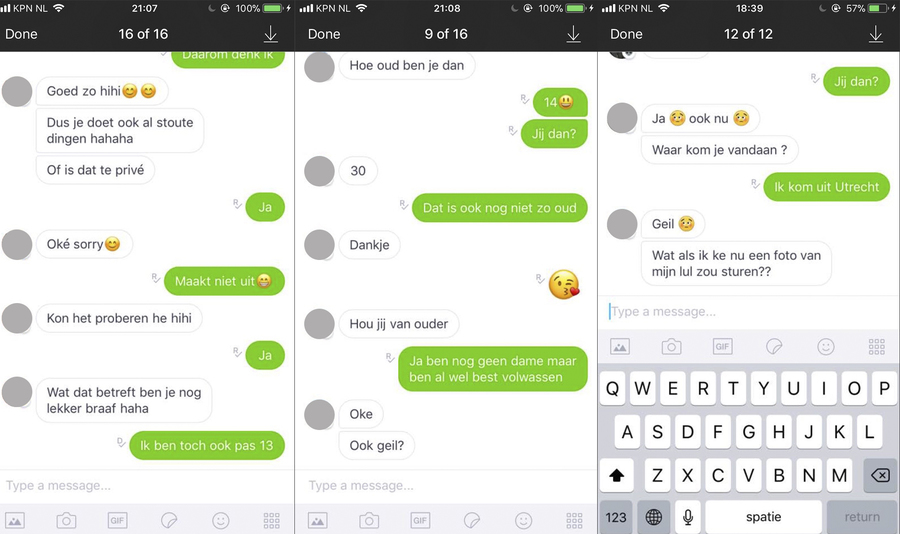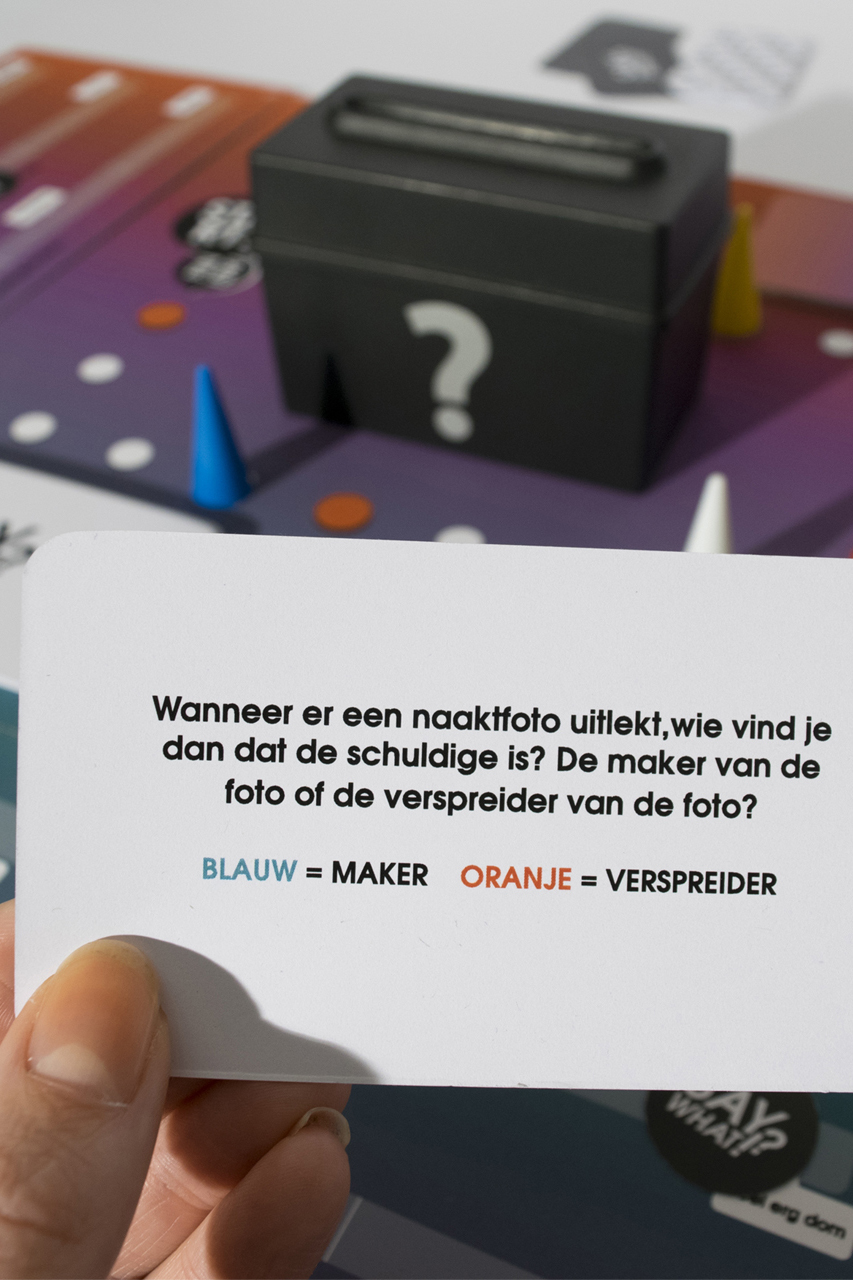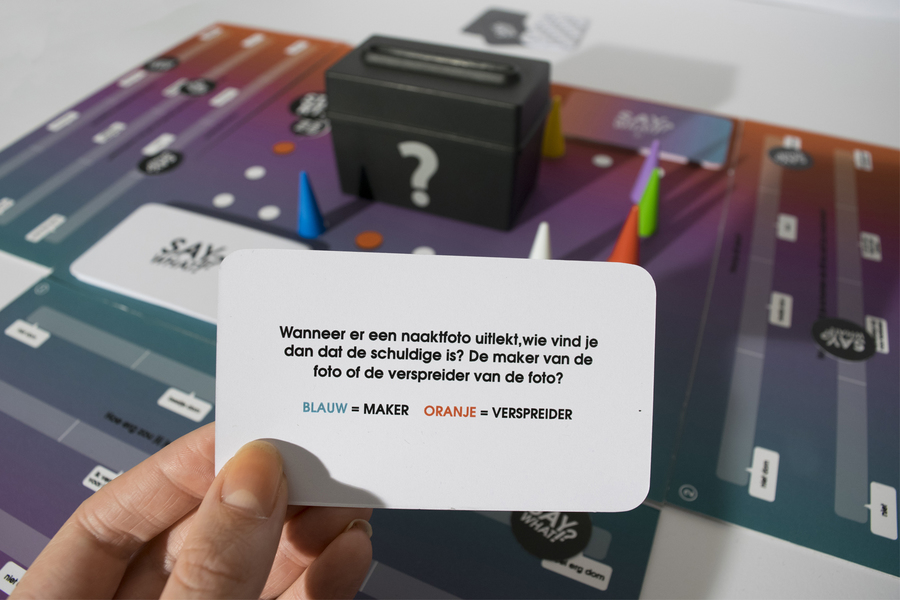Say What!?
Is it stupid, is it dumb?
Is it their fault if their nude photo leaks? Because it is such a taboo to talk about these questions, I designed Say What!?. This method involves different game elements, that trigger discussion among teenagers about sexting. Designed to be used in mentor classes at high schools. While participating in this game, pupils will develop empathy and may change their behavior towards the victims of sexting.
I really want to see a change in the way people think and react when a nude photo leaks. We have to stop blaming the victim. He or she is not stupid or dumb, we have to look at the spreader in stead of the one who send a photo. Why does someone not keep the picture for him or her self? This is the question we should ask, not why someone have send a picture (because, yes it can be fun). These questions and topics will be discussed while participating Say What!?. So with this game I hope to change the behavior towards the victims of sexting. And let them think twice before spreading someones nude photo.
Victim blaming
Victim blaming means that the victim is held responsible for his or her situation. This works against the victim. Every year dozens of young people with severe psychological problems, addictions and traumas appear in psychiatric clinics. (RTL Nieuws) The impact of a leaked photo is comparable with a trauma and as a result these young people develop posttraumatic stress disorder-like symptoms. These teenagers become hyper-alert and shame and guilt affect their entire lives. For example, they no longer dare to go to school because they will be confronted with everyone who has seen their picture. And possibly worse, the fear of going out the door at all. Because the victims often won’t talk about it, the psychological consequences are getting worse. This way they can become socially isolated and thereby develop depressive thoughts. (Bicanic, Alisic) Without victim-blaming, young people would dare to look for help (much faster) without shame, because they did not do anything stupid. But someone else has done something, namely, the trust is damaged.
Research
For my research I really wanted to come as close as possible to my target group. What are they doing online and which websites and apps do they use. Have you ever heard of Omegle? I had not until a teenager mentioned it in a comment on a youth forum. Omegle is a website that allows you to chat with a random stranger. Before I knew I was in a webcam chat with a complete stranger. I saw a man in his bed, he asked what was underneath my black tank top. I immediately disconnected. Then I tried a chat without using my webcam, the first thing I was asked was “b/g?” meaning are you a boy or girl? He also asked if we could talk (and send photos) with apps called Snapchat or Kik. Second thing I had never heard of. Kik is an app where people can join group chats and also send private chats. It’s easy to make a profile without using your phone number. I created a profile of an under aged girl and looked what happened. Immediately I got messages from boys, or I have to say men. I was shocked and disgusted, so many ‘old’ men. I answered a few messages and all the conversations turned very sexual, even I told them I was just a kid! This caused an extra trigger to really do something with and about this.

Links
CONTRIBUTE
Feel free to contribute to Beyond Social.














